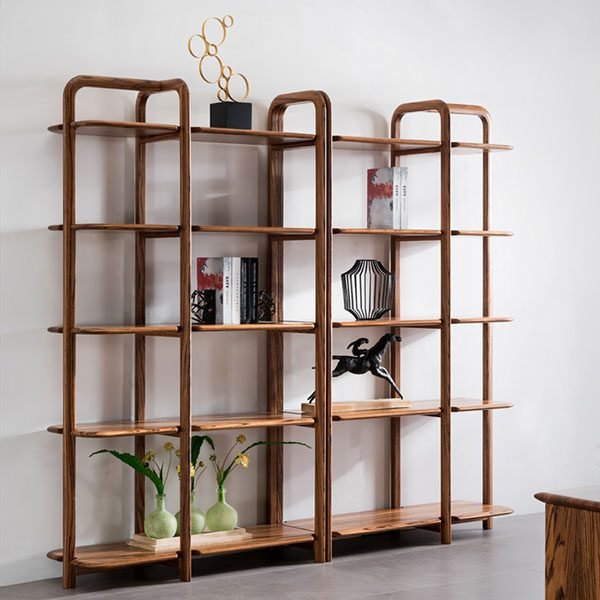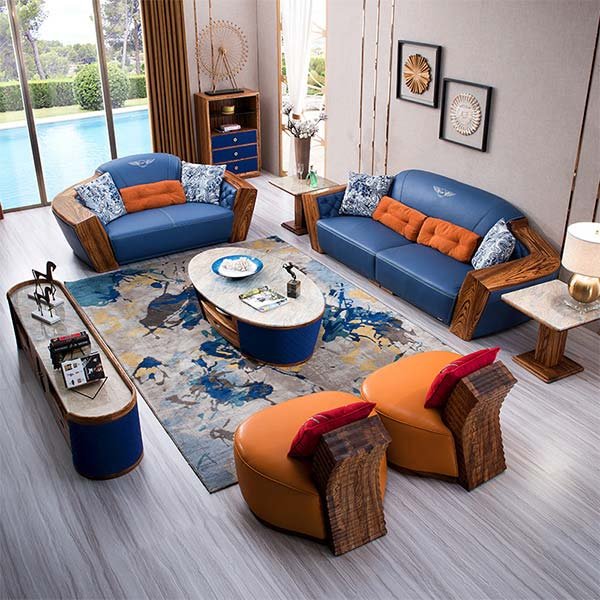“Transforming the Past, Embracing the Present: Revive Your Space with Old Furniture”
Reviving Old Furniture: Creative DIY Ideas
Reviving Old Furniture: Creative DIY Ideas
Old furniture can often hold sentimental value or be a unique piece that adds character to your home. However, over time, it may start to show signs of wear and tear. Instead of discarding these pieces, why not consider reviving them with some creative do-it-yourself (DIY) ideas? In this article, we will explore various ways to breathe new life into your old furniture.
One of the simplest ways to revive old furniture is by giving it a fresh coat of paint. Whether it’s a wooden chair, a dresser, or a coffee table, a new color can completely transform its appearance. Before painting, make sure to clean the surface thoroughly and sand it down to create a smooth base. Choose a paint color that complements your existing décor or opt for a bold, contrasting shade to make a statement.
If you’re feeling more adventurous, consider adding some decorative elements to your furniture. Stenciling is a popular technique that allows you to create intricate patterns or designs on any surface. You can use stencils to add a touch of elegance to a plain dresser or create a whimsical pattern on a side table. Another option is decoupage, which involves gluing paper or fabric onto the furniture and sealing it with a protective coating. This technique allows you to incorporate unique patterns or images onto your furniture, giving it a personalized touch.
For those who enjoy working with their hands, upholstery can be a rewarding DIY project. Reupholstering old furniture involves removing the existing fabric and replacing it with a new one. This allows you to update the look of your furniture while also ensuring its comfort and durability. Choose a fabric that suits your style and consider adding some decorative elements, such as buttons or piping, to enhance the overall design.
Another creative idea for reviving old furniture is repurposing. Instead of using a piece of furniture for its original purpose, think outside the box and find a new use for it. For example, an old wooden ladder can be transformed into a unique bookshelf, or a vintage suitcase can be turned into a stylish side table. Repurposing not only gives new life to old furniture but also adds a touch of creativity and uniqueness to your home.
In addition to these DIY ideas, it’s important to take proper care of your revived furniture to ensure its longevity. Regular cleaning and maintenance will help preserve its beauty and functionality. Avoid placing furniture in direct sunlight or near sources of heat, as this can cause fading or warping. Use coasters or placemats to protect surfaces from spills and scratches. Additionally, consider applying a protective finish or wax to seal the paint or stain and provide an extra layer of protection.
Reviving old furniture can be a fun and rewarding project that allows you to unleash your creativity and breathe new life into your home. Whether it’s through a fresh coat of paint, decorative techniques, upholstery, or repurposing, there are endless possibilities to transform your old furniture into unique and stylish pieces. So, instead of discarding that worn-out chair or outdated dresser, consider giving it a second chance with these creative DIY ideas.
Tips for Restoring Antique Furniture to its Former Glory
Tips for Restoring Antique Furniture to its Former Glory
Restoring antique furniture can be a rewarding and fulfilling experience. Whether you have inherited a family heirloom or stumbled upon a hidden gem at a flea market, bringing old furniture back to life requires patience, skill, and attention to detail. In this article, we will provide you with some valuable tips on how to deal with old furniture and restore it to its former glory.
First and foremost, it is essential to assess the condition of the antique furniture before starting any restoration work. Look for signs of damage, such as cracks, chips, or missing pieces. Take note of any loose joints or wobbly legs. This initial evaluation will help you determine the extent of the restoration needed and guide your decision-making process.
Once you have assessed the condition of the furniture, the next step is to clean it thoroughly. Use a mild soap and warm water to remove dirt and grime. Avoid using harsh chemicals or abrasive cleaners, as they can damage the delicate surface of the wood. Gently scrub the furniture with a soft cloth or sponge, paying attention to intricate details and hard-to-reach areas.
After cleaning, it is time to address any structural issues. Repair loose joints by applying wood glue and clamping the pieces together until the glue dries. If there are missing pieces, consider consulting a professional furniture restorer who can recreate them using matching materials and techniques.
Once the structural repairs are complete, it is time to focus on the aesthetic aspects of the furniture. Start by sanding the surface to remove any existing finish or paint. Use a fine-grit sandpaper and work in the direction of the wood grain to avoid damaging the surface. This step will prepare the furniture for staining or painting.
When choosing a finish for your antique furniture, consider its original style and era. Research the appropriate finishes used during that time period and try to replicate them as closely as possible. Apply the chosen finish using a brush or a cloth, following the manufacturer’s instructions. Allow the finish to dry completely before applying additional coats or wax.
In addition to the restoration process, it is crucial to take proper care of your antique furniture to preserve its beauty for years to come. Avoid placing it in direct sunlight or near sources of heat, as this can cause the wood to warp or fade. Use coasters or placemats to protect the surface from spills and scratches. Regularly dust and polish the furniture to maintain its shine and prevent the buildup of dirt.
In conclusion, restoring antique furniture requires careful planning, attention to detail, and a passion for preserving history. By following these tips, you can bring old furniture back to life and enjoy its beauty for years to come. Remember to assess the condition, clean thoroughly, address structural issues, choose appropriate finishes, and take proper care of your restored furniture. With patience and dedication, you can transform old furniture into cherished pieces that tell a story of the past.
Repurposing Old Furniture: Unique Ideas for a Fresh Look
Repurposing Old Furniture: Unique Ideas for a Fresh Look
When it comes to dealing with old furniture, many people are unsure of what to do. Instead of throwing it away or letting it collect dust in the attic, why not consider repurposing it? Repurposing old furniture not only gives it a fresh look but also adds a unique touch to your home decor. In this article, we will explore some creative ideas for repurposing old furniture.
One popular way to repurpose old furniture is by turning it into a statement piece. For example, an old dresser can be transformed into a stylish kitchen island. By adding a countertop and some bar stools, you can create a functional and eye-catching addition to your kitchen. This not only saves money but also adds a touch of personality to your space.
Another idea for repurposing old furniture is to turn it into a storage solution. An old bookshelf can be transformed into a trendy wine rack by removing some shelves and adding wine bottle holders. This not only provides a practical storage solution but also adds a touch of elegance to your home. Additionally, an old chest of drawers can be repurposed into a unique storage bench by adding a cushion on top. This not only provides extra seating but also adds a stylish touch to your entryway.
If you have an old coffee table that has seen better days, consider repurposing it into a stylish ottoman. By adding some foam padding and fabric, you can create a comfortable and trendy piece of furniture. This not only saves money but also adds a personalized touch to your living room. Additionally, an old headboard can be repurposed into a charming coat rack by adding some hooks. This not only provides a practical storage solution but also adds a rustic touch to your hallway.
For those who enjoy gardening, repurposing old furniture can also be a great way to add some charm to your outdoor space. An old ladder can be transformed into a unique plant stand by adding some pots or baskets. This not only adds a touch of greenery to your garden but also adds a rustic and whimsical touch. Additionally, an old wooden chair can be repurposed into a charming flower planter by removing the seat and adding some soil and flowers. This not only adds a pop of color to your garden but also adds a vintage touch.
In conclusion, repurposing old furniture is a great way to give it a fresh look and add a unique touch to your home decor. Whether you turn an old dresser into a kitchen island or transform a coffee table into an ottoman, the possibilities are endless. By repurposing old furniture, you not only save money but also contribute to a more sustainable lifestyle. So, next time you come across an old piece of furniture, think twice before throwing it away and consider repurposing it instead.
Заключение
Заключение: Для работы с старой мебелью рекомендуется следовать нескольким шагам. Во-первых, оцените состояние мебели и определите, нуждается ли она в ремонте или реставрации. Затем, проведите необходимые ремонтные работы, включая замену поврежденных деталей или перекраску. Если мебель в хорошем состоянии, но не соответствует вашему стилю, вы можете обновить ее с помощью новых обивочных материалов или аксессуаров. Не забывайте о правильном уходе за мебелью, чтобы она служила вам долгое время. В целом, работа с старой мебелью требует терпения, творческого подхода и некоторых навыков ремонта и реставрации.



